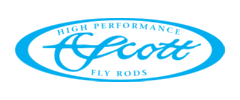Sauk River, WA
The Sauk River, which is approximately 90 minutes from Seattle, is one of the jewels of Washington state. It is a brawling river and is included in the Wild and Scenic River System. A free flowing river with mountains and forest cascading right into the river in places, it is swift with larger boulders and varied currents that produce intriguing and challenging water to fish. The Sauk produces both winter and summer steelhead as well as silver and chum salmon. Dolly varden char also inhabit the runs and riffles.
The Sauk has three distinct sections that are of interest to fly anglers. From the logging town of Darrington down to the mouth of its major tributary, the Suiattle, the river is smaller and more difficult to fish due to limited public access. This section is best fished using a boat for access. From the Suiattle down to the local spot known as "The Native Hole" the river widens a bit, takes on more water from the Suiattle and has numerous sections which are choked with large boulders and faster water. This section is easily accessed from the highway bordering the river. In the lower Sauk below "The Native Hole" the valley widens and the streambed becomes much more meandering. Smaller rocks and sand have filled in this section quite a bit and each year this section changes with every high water that occurs. Most of the water here is best accessed from a boat. The whole river is very tempermental for fishing as rain in the mountains can color the water easily due to sediment runoff.
The Sauk opens on June 1 st and is not much of a river to fish due to heavily silted water from glacier runoff. The Sauk becomes fishable again later in the fall when cooler temperatures freeze the glacier and winter storms are still a few weeks away. The Sauk gets a few silver salmon and chum salmon each year, but most anglers target the dolly varden char that inhabit the river feeding on the bounty that comes in the form of salmon eggs and flesh. A small hatchery winter steelhead run spices up an angler's dolly fishing, but the real prizes of the Sauk are the late running native winter steelhead which easily average 10 to 12 pounds. Larger fish are hooked each year and every one is thick shouldered and strong. These fish run the river right up until the river closes on April 30th. The river is closed during May to protect native spawners.
Weather and Flows Links
- Fishing Report
- Water Levels at Darrington
- Water Levels at Sauk
- Forecast Flows at Sauk
- Weather at Darrington
Fly Fishing the Sauk River
Approximately 90 min. from Seattle, the Sauk is a free-flowing river and one of the primary tributaries of the Skagit. Unparalleled in its beauty thanks to a rugged character and remote feel, the Sauk river ranks as one of the top experiences in Washington fly fishing. Not only is it a part of the Wild and Scenic Rivers System, but also it boasts some of most storied and scenic waters anywhere on the Steelhead Coast.
Prone to cloudiness due to sediment runoff in wet weather, its waters are indeed temperamental. However, if you catch the river at the right level and you’ll see a tint of river known to local anglers as “Sauk green”—the perfect level of clarity to make a fresh run of grabby fish feel secure. Hooking into a chrome native steelhead is no longer as common as it used to be due to early closures, but getting to know the Sauk in all its seasons and moods is always worth the trip.
When is the Sauk River Open to Fishing?
- Fishing regulations are subject to emergency closures and they change from year to year, so before you go, know what you are fishing for and always check the regs: http://wdfw.wa.gov/fishing/regulations/. Feel free to give us a ring with questions. It’s better to be safe than sorry!
- From its mouth to its confluence with the Whitechuck river, the Sauk river is generally open to fishing from June 1st until January 31st. . You can fish up to 3 flies. All trout must be released.
Sauk River Sections
The Sauk has three distinct sections that are of interest to fly anglers. From the logging town of Darrington down to the mouth of its major tributary, the Suiattle, the river is smaller and more difficult to fish due to limited public access.
From the Suiattle down to the local spot known as the “Native Hole" the river widens a bit, takes on more water from the Suiattle and has numerous sections which are choked with large boulders and faster water. This section is easily accessed from the highway bordering the river.
In the lower Sauk below the "Native Hole" the valley widens and the streambed becomes much more meandering. Smaller rocks and sand have filled in this section quite a bit and each year this section changes with every high water that occurs. Most of the water here is best accessed from a boat. The whole river is very temperamental for fishing as rain in the mountains can color the water easily due to sediment runoff.
Sauk River Species and Seasons
The Sauk opens on June 1st. Due to heavily silted water from glacial runoff, summertime is not an ideal time to fish the system. The waters clear later in the fall when cooler temperatures bring in low-altitude freezing levels and winter storms are still a few weeks away. The Sauk gets a few silver salmon and chum salmon each year, but most anglers target the bull trout that inhabit the river feeding on the bounty that comes in the form of salmon eggs and flesh. The real prizes of the Sauk are the native winter steelhead which easily average 10-12 lbs. Larger fish are hooked each year and every one is thick shouldered and strong. Current fishing regulations protect the majority of the run due to the river’s closure on January 31st.
Tips on Fishing the Sauk
As a tributary of the Skagit river which is prone to high water with minimal clarity, the most difficult aspect of success on the Sauk is going when the river is fishable.
- Reading the hydrograph each time you go is essential. Not only will it let you know when the river is potentially too high to fish, but over the course of several outings, you will learn which runs fish best at what water levels and get a general sense of when the river is in shape. Rule of thumb? Wading the Sauk when the water levels at Darrington are around 1,200 C.F.S. is a good level to start at.
- Cover the water in its entirety. The Sauk, a smaller river compared to the Skagit, can hold fish in surprising places. The runs are generally easier to read, but don’t neglect fishing thoroughly from the head to the tail, and always let your fly swing through to the hang-down.
Guiding and Expert Instruction
A guide can take years off the learning curve. The best way to experience the Sauk is during a full-day float of the lower river, or during a full-day walk-and-wade trip. We also offer steelhead schools and spey-casting instruction.Recommended Equipment
Double-Handed Rods in 7 – 9 Weight
|
Spey lines for the Lower River
|
Recommended Flies
Winter Steelhead
|
Salmon
|
Bull-Trout
|










